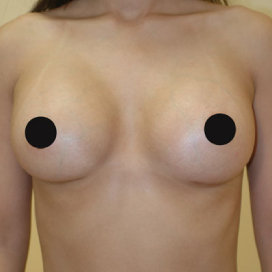
find out everything you need to know about moles and non-cancerous skin lesion removal options
Naturally occurring skin lesions like moles can be a result of aging, day-to-day sun exposure, diseases, or just genetics. Surgical excision of lesions or moles may be imperative for malignant (cancerous) growths, but the non-cancerous, (benign) ones will often be removed as well for aesthetic reasons or as a precaution. Moles, warts, and abnormal skin growths can be disfiguring or unsightly, and sometimes they feel irritated or become reddened.
To prevent health risks associated with abnormal growths it’s important to take notice of any change in the shape or color of a mole and have it assessed by your primary care doctor or dermatologist. When it comes time for removal, most health insurance plans in NYC and New Jersey cover mole removal so you can schedule your treatment with an experienced plastic surgeon.
Our practice offers multiple skin care treatment methods and lesion removal. It focuses on using specialized techniques to remove abnormal growths or skin lesions all while preserving health and minimizing pain experienced by patients.
Dr. Gartner is expertly skilled in performing complex and minor procedures with meticulous care and precision. Plastic surgeons focus on creating visibly beautiful results and minimizing scarring each day so your lesion removal doesn’t have to leave an unattractive scar.
The Gartner Plastic Surgery and Laser Center offers a carefully curated selection of aesthetic treatments to suit every need. We invite you to book a consultation and find out which of our facial peel options are best suited to your needs.
Dr. Gartner has extensive experience in the removal of moles and will discuss different treatment options, as well as describe which option best suits your needs.
MOLES TREATMENT AND REMOVAL
Dr. Gartner has extensive experience in the removal of moles and will discuss different treatment options, as well as describe which option best suits your needs. As a board-certified plastic surgeon and general surgeon in New York and New Jersey, Dr. Gartner plans treatment for each patient individually to address their skin lesion and aesthetic needs. Large moles, or lesions located in sensitive areas can be removed surgically; whereas small warts or moles are often treated with salicylic acid, liquid nitrogen, or laser tool.
PLEASE NOTE:
Skin cancer diagnosis is an important, complex field and Gartner Plastic Surgery and Laser Treatment Center does not perform skin cancer screening procedures or remove malignant lesions. Removal of cancerous moles may require further skin biopsies, and/or prognosis. We do recommend seeing a dermatologist who specializes in skin cancer and can provide thorough, cancer-focused assessments when appropriate. We recommend that skin cancer specialists examine any skin lesions persisting for more than a month or showing noticeable changes more closely.
Dr. Gartner specializes in moles and non-cancerous skin lesions which enhance your appearance from head to toe. Dr. Gartner plans treatment for each patient individually to address their skin lesion and aesthetic needs.
Common Types
- Congenital nevi (birthmarks)
- Intradermal/compound nevi (moles)
- Hemangiomas, angiomas, and other vascular lesions
- Seborrheic keratosis
- Actinic keratosis
- Sebaceous hyperplasia
- Age spots
- Cutaneous horn
- Skin tags
- Cysts
At your initial visit, we will address your concerns, and discuss possible options for treatment. Dr. Gartner will guide you through what to expect during the procedure, the recovery process, and the potential for scarring. Many benign skin lesions don’t require removal or treatment but people often choose to remove moles, birthmarks, skin tags, and benign cysts for aesthetic reasons.
Here at Gartner Plastic Surgery and Laser Treatment Center, we tailor our removal techniques for the various lesion types and sizes and will discuss these various options with you at the time of your initial consultation.
however, the only way to know if you’re a suitable candidate for surgery is by talking to Dr. Gartner during your private medical consultation.
Treatments
EXCISION
Removal of skin lesions with appropriate margins; scars heal to flat, faint marks that gradually fade.
SHAVE EXCISION
Use of sharp razor to remove growths, or feather edges of the excision site to make the scar less noticeable.
LASER ABLATION
Targets lesions in sensitive areas by delivering concentrated light wavelengths to the skin, resurfacing skin surface (removes layers of aged and damaged skin).
TOPICAL TREATMENTS
To treat lesions located only in the top layer of skin; these creams or lotions are usually applied to the skin every day for several weeks to prevent skin conditions from spreading and multiplying.
LOOP CAUTERY
Use of a device that emits electrical current to remove lesions, control bleeding, and precisely remove tissue.
Surgery Steps
STEP 1 – ANESTHESIA
Your surgeon will recommend the best choice of anesthesia for you. The choices include local, intravenous sedation, and general anesthesia. Rarely is a general anesthesia used for minor surgery in healthy adults. These medications are administered to provide comfort during these procedures.
You’ll be advised to start wearing a bra two to four weeks after your surgery, depending on how fast your implants settle. During this time, if you dislike the appearance of your nipples through your clothing, silicone disc pasties can be worn to hide them. These are available at Victoria’s Secret, among other stores.
STEP 2 – REMOVAL
Depending on the type of skin lesion, size, and location of skin lesion, your surgeon can perform one of many different methods to excise or carefully laser it away. Unless the procedure requires more extensive and intricate removal of tissue, most skin lesion removals are completed in 30 minutes or less.
Dr. Gartner may use electro cautery to quickly and painlessly remove the mole leaving smooth skin that heals quickly. For deeper lesions, excision is performed to minimize skin surface irregularities and ensure minimal scarring. Dr. Gartner refrains from using permanent, external stitching and staples whenever possible because these can leave additional scars.
STEP 3 – RECOVERY
In the days following the procedure, minimal skin discomfort can be experienced. Incision sites may be sensitive or reddened temporarily. It is important to keep the area clean and dry, following your plastic surgeon’s care instructions. With this, most patients can resume normal daily activities right away.

Make sure to keep the incision site(s) clean and protected from potential injury. Try to limit strenuous activities that cause tension in the incision area. Protect any fresh scars from the sun each day to avoid irregular pigmentation issues. Don’t smoke. Ingredients in cigarettes impair healing and may lead to infection or unwanted scarring.
At Gartner Plastic Surgery and Laser Treatment Center, Dr. Gartner offers plastic surgery, reconstructive surgery methods, and mole removal in New Jersey, and NYC. All too often people visit their family doctor or dermatologist to be told that mole removal is quick, easy, and doesn’t require a plastic surgeon. Many professionals can indeed remove a lesion quickly, but if you care about the precision of work done and want to ensure the best outcome for your procedure scars, it’s better to leave the minor surgery to skin surgery specialists.





